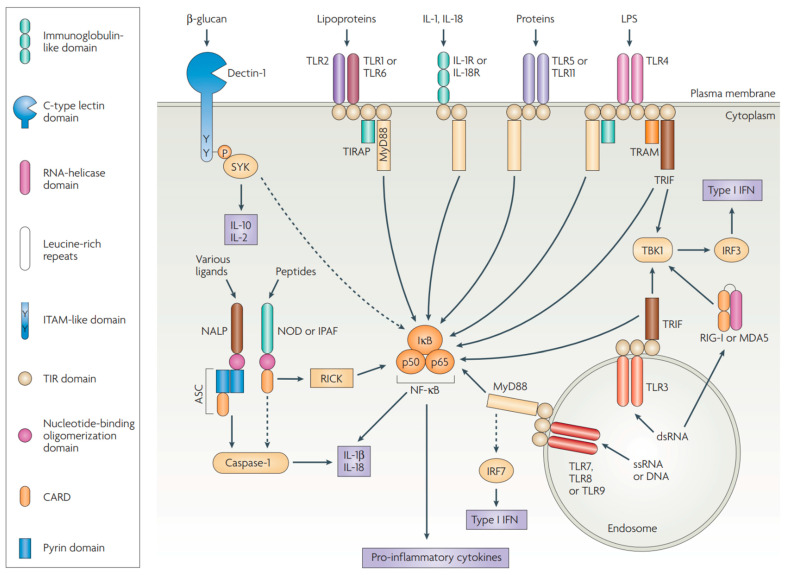Figure 3.
Schematic representation of the structure and main signaling pathways of the PRR families. Only the adaptor molecules and the main signaling pathways that differentiate the different classes of PRR are shown. Dectin-1 (a β-glucan receptor) is shown as an example of various cell-surface PRRs, some belonging to the lectin-like family, and some linked with the immunoreceptor tyrosine-based activation motif (ITAM)-containing adaptor Fc receptor γ-chain (FcRγ), the activation of which can markedly affect TLR signaling. ASC, apoptosis-associated speck-like protein containing a CARD (caspase-recruitment domain); ds, double-stranded; IFN, interferon; IκB, inhibitor of NF-κB; IL, interleukin; IPAF, ICE-protease-activating factor; IRF, IFN-regulatory factor; LPS, lipopolysaccharide; MDA5, melanoma-differentiation-associated gene 5; MyD88, myeloid differentiation primary-response gene 88; NALP, NACHT-, LRR- and pyrin-domain-containing protein; NOD, nucleotide-binding oligomerization domain; RICK, receptor-interacting serine/threonine kinase; RIG-I, retinoic-acid-inducible gene I; ss, single-stranded; TBK1, TANK-binding kinase 1; TIRAP, Toll/IL-1R (TIR)-domain-containing adaptor protein; TRAM, TRIF-related adaptor molecule; TRIF, TIR-domain-containing adaptor protein inducing IFNβ; SYK, spleen tyrosine kinase. Adapted with permission from [149]. Copyright 2007, Springer Nature.

